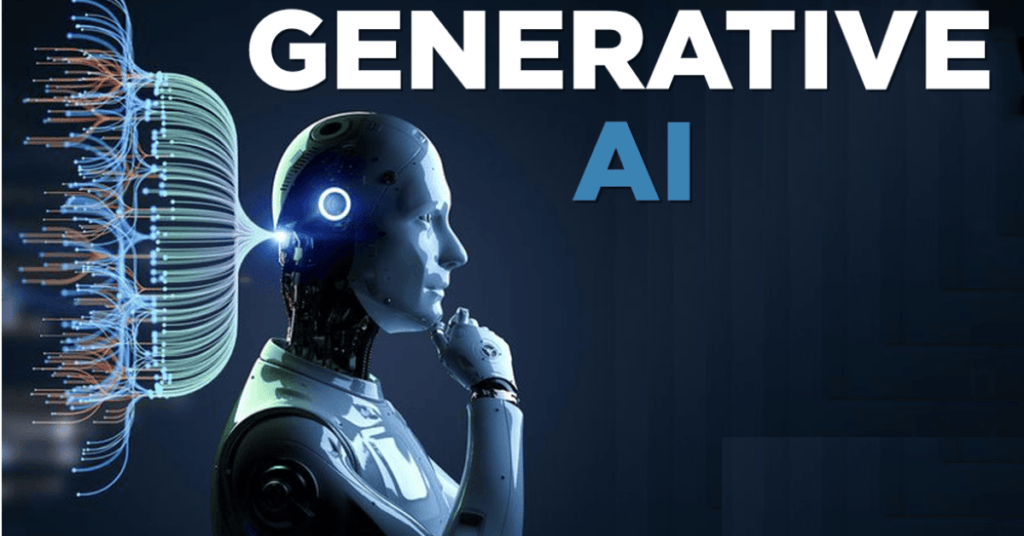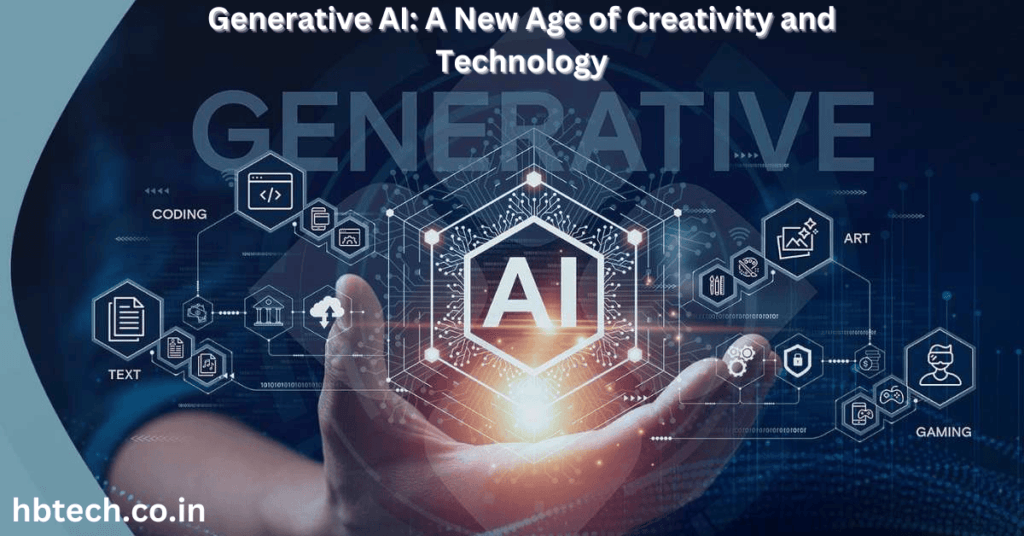Generative AI is a part of artificial intelligence that focuses on making new, original content rather than just analyzing or organizing information. Using patterns learned from existing data, generative AI can create images, write stories, compose music, and even help design products. this field is reshaping industries by introducing unique ways to create, invent, and solve problems. Let’s look at how generative AI works, its real-world uses, and some of the challenges and ethical issues it presents

What Exactly is Generative AI?
Generative AI is a type of machine learning that creates new content by identifying patterns in existing data. Two key technologies drive Generative AI
- Generative Adversarial Networks (GANs): GANs are a type of neural network with two parts: a “generator” that tries to create realistic images, videos, or text, and a “discriminator” that tries to identify if the output is real or fake. This process helps the generator get better over time
- Transformer Models: These are powerful models trained on huge amounts of text data. Examples include OpenAI’s GPT (Generative Pretrained Transformer) and Google’s BERT, which help generate coherent and relevant text.
How Generative AI is Being Used Today
The creativity of generative AI has led to its adoption across various industries:
1. Content Creation and Design
Generative AI helps designers and content creators make images, videos, and text. It assists writers in brainstorming ideas or drafting content. Programs like DALL-E can create images based on text descriptions, while GPT can write articles and stories making content creation quicker and easier
2. Healthcare and Medicine
In medicine, generative AI models new drug structures, helping scientists find potential new treatments faster. AI tools can predict how different drugs may interact, speeding up research that traditionally took years. This is particularly useful in cancer research where identifying effective drugs is crucial
3. Gaming and Virtual Worlds
Generative AI powers game environments, allowing developers to create unique game worlds, characters, and scenarios. Games like No Man’s Sky use AI to generate endless worlds for players to explore, enhancing gameplay and immersion
4. Customer Service and Personalization
Generative AI chatbots improve customer service by creating responses that feel conversational and personalized. For example it can recommend products based on customer preferences or generate custom solutions, giving users a more tailored experience.
5. Education and E-Learning
Generative AI helps personalize education, creating custom quizzes, exercises and lessons based on each student’s needs. This approach makes learning more engaging and helps students progress at their own pace.
Challenges and Ethical Issues in Generative AI
Despite its many benefits, generative AI brings unique challenges that we must address carefully
1. Ownership and Copyright
Since AI creates new content by learning from existing data, questions arise around who owns the creations. Should it be the user, the developer or the company that made the AI? Laws about copyright and AI-generated content are still unclear, leaving much open for debate
2. Bias and Fairness
AI models learn from data, so any biases in that data can be carried into the content they create. For instance, if a model is trained on biased text it may produce output that unintentionally reinforces stereotypes. Working to make AI fairer and more inclusive is an important part of generative AI development.
3. Misinformation and Deepfakes
Generative AI can produce realistic fake content, such as deepfakes, which could spread misinformation or even cause harm by impersonating people. Managing the risks of deepfakes and ensuring they are not used maliciously are essential for society.
4. Environmental Impact
Training large AI models uses a lot of energy, which can impact the environment. The computing power needed to train models like GPT is considerable and researchers are working to find ways to make AI more energy-efficient.
Looking Forward: The Future of Generative AI
The possibilities of generative AI are endless and we are just scratching the surface. As the technology develops, it could shape industries in new ways, enhance collaboration between humans and AI, and lead to inventions we haven’t imagined yet. Some exciting future possibilities include:
- Human-AI Collaboration: Generative AI could become a tool that works alongside us, helping people in creative work, solving complex problems, and even contributing to scientific research.
- Accessibility and Inclusivity: Generative AI can create content that adapts to different needs, making media and information more accessible to everyone, including people with disabilities.
- Industry Innovations: Generative AI can bring innovations in fields like architecture, design, and entertainment, pushing boundaries in storytelling, creating interactive experiences, and improving products.
Generative AI is changing how we think about creativity and problem-solving. The technology offers new opportunities, but it also requires us to navigate challenges thoughtfully. With careful development and responsible use, generative AI can transform our world for the better, enhancing creativity, innovation, and collaboration in ways that were once thought impossible.
Frequently Asked Questions (FAQs)
What is Generative AI?
Generative AI is a branch of artificial intelligence that creates new, original content by learning from existing data. This can include creating images, text, music, and more. Unlike traditional AI models that categorize or predict, generative AI focuses on generating new outputs.
How does Generative AI work?
Generative AI models use advanced neural networks, such as Generative Adversarial Networks (GANs) and Transformer Models. GANs work with two networks: a generator that creates new data and a discriminator that evaluates its quality, improving the generator’s results over time. Transformers, like GPT and DALL-E, are models trained on massive datasets to understand context and relationships, making coherent and contextually accurate creations.
What are some practical applications of Generative AI?
Generative AI has diverse applications:
Content Creation: Assists in creating text, images, and videos.
Healthcare: Models new drugs by simulating molecular interactions.
Gaming: Generates unique game worlds, characters, and scenarios.
Customer Service: Enhances chatbot responses for personalized customer interactions.
Education: Creates custom quizzes and lessons to meet individual learning needs.What challenges and ethical issues does Generative AI present?
Ownership and Copyright: Legal rights around AI-generated content are unclear.
Bias and Fairness: AI can reinforce existing biases if trained on biased data.
Misinformation and Deepfakes: AI can create fake content, posing risks for misinformation.
Environmental Impact: Training large AI models requires significant energy, affecting the environment.Who owns the content generated by AI?
Ownership of AI-generated content is still a gray area legally. It’s debated whether ownership should belong to the AI user, developer, or the company behind the AI. Copyright laws are evolving to address this question.
How does generative AI impact the environment?
Training large AI models consumes a lot of energy, which leaves a significant environmental footprint. Researchers are working on creating more energy-efficient AI models to reduce this impact.
What are the future possibilities for generative AI?
Generative AI has many exciting future applications:
Human-AI Collaboration: Acting as a co-creator to help people in creative work or scientific research.
Increased Accessibility: Creating content adaptable to various needs, making media more inclusive.
Industry Transformation: Driving innovation in fields like architecture, design, and entertainment.Will generative AI replace human creativity?
Generative AI complements rather than replaces human creativity. It can help brainstorm ideas, enhance creative work, and generate new possibilities, but it lacks the unique experiences, intuition, and emotional insights that humans bring to creativity.









